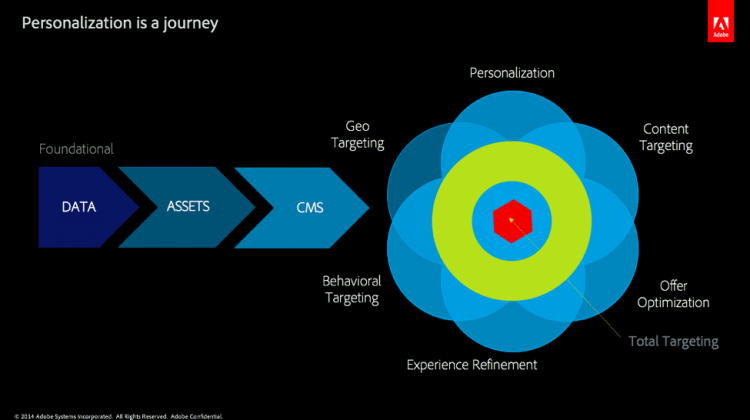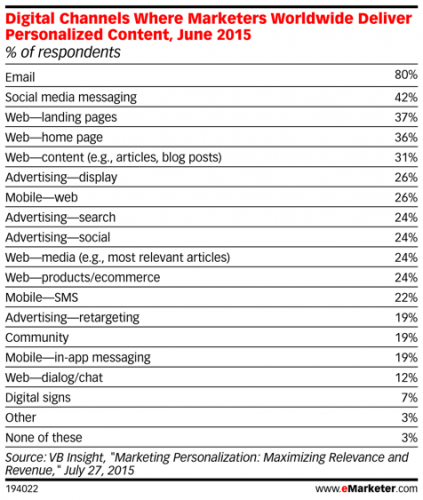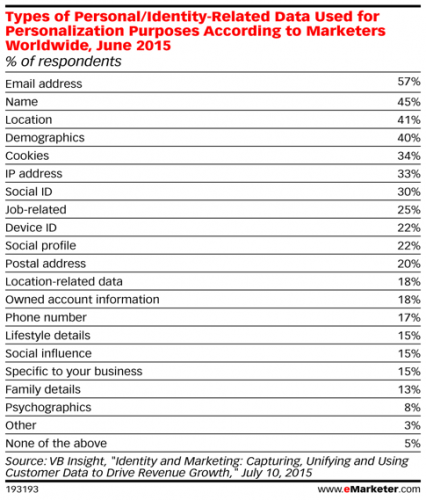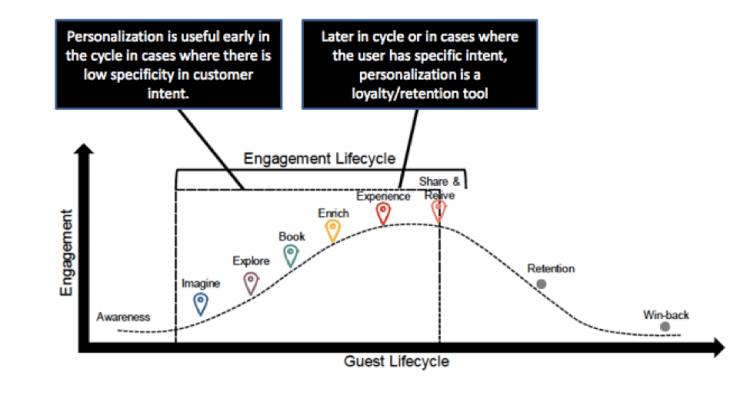Skift Take
"One of the recurring pitfalls in personalization deployments is attacking the problem in silos and not through an integrated marketing team that includes the data analyst, IT expert, creative professional, sales, and marketing in one cohesive and coordinated group."
Effectively executed, personalization is an integral part of the journey to guest loyalty and advocacy.
Over the years the travel and hospitality (T&H) industry has known how important personalization is to guests, but hasn’t always been consistent in delivering.
Three things hang in the balance:
- New guest acquisition in a time of large-scale demographic changes
- Existing guest retention in an atmosphere of greater competition
- Staying competitive in a market impacted by disruptive entrants
Being personal is no easy task. There isn’t a single simple approach to cover all the use cases. The sheer velocity of change in the T&H context, data and guest sentiment creates an engagement challenge of immense and complex proportions. A multifaceted approach is needed to take advantage of the industry’s wealth of data and content.
Personalization for the Masses
Delivering personalized digital and physical experiences in the travel and hospitality industry is not a new tactic. It’s always been pursued to a limited extent, and has traditionally focused on luxury and high-end segments. Delivering personalization at scale was hampered by affordability. However, the disruptive innovation of increasing data availability has changed the nature of the game, enabling us to know much more about the guest. This, along with the burgeoning omnichannel digital environment with touch points never before considered, allows us to continually engage these guests. Personalization is now scalable, which makes it affordable for delivery to the masses. Combined with improved product offerings, it has the potential to deliver a new golden era of travel.
The examples of real-time, data-driven success are out there. In particular, personalization through social media campaigns is well documented. As an example, KLM has realized phenomenal success from 2010 to present. More recently, WestJet has led the way in impacting brand reputation in very positive ways with the resulting fanfare derived from 41 million views of its 2013 offering. What you will see is science (data analytics) being married to creative arts in delivering excellent personalized experiences at scale.
How Is the Personalized Message Delivered?
We talked about the proliferation of digital channels and an omnichannel environment as one of the enablers of personalization for the masses. Recent VentureBeat research (see chart below) highlights the marketer’s personalization progress. It may seem surprising, but email still tops the chart as the channel most favored to deliver personalized content. Eight out of every 10 personalized marketing messages are delivered via email and at respectable ROI. Social media also has a respectable showing at 42 percent.
If you think about it, logic would dictate that these two channels are the ones favored by marketers because they deliver messages in a one-on-one environment. They represent an opportunity to talk to a known guest on a one-to-one basis.
On the other hand, the research results show that there is a large unaddressed opportunity in delivering personalization in all channels, for known as well as unknown travelers and guests. Additionally, leveraging advanced data sources such as contextual and third- and second-party data enhance the quality of personalization. Large swaths of addressable digital/physical experiences remain impersonal.
Where Do We Start?
We start with understanding the data (as data forms the foundation for being able to personalize in the right way).
Here, we border on the precipice of privacy issues. How much data do we need to get the job done? How much data is too much? In general, first-party, opt-in data from your customer relationship management (CRM) system is the ideal starting point, especially in addressing known customers. Unknown customer/data partnerships and coops are emerging to address the data gaps and provide the appropriate level of detail to begin a personalized conversation. Progress on these in T&H has been slow because of privacy concerns; however, 2016 appears to be a pivotal year.
Strategy and Intent
At the root of all personalization strategies is a firm understanding of the customer lifecycle. We used to call it a marketing funnel because it took on that shape as it narrowed down to an eventual conversion. However, as demonstrated in the below graphic, that simplified concept of a funnel seems outdated. In T&H, engagement increases as we move through the lifecycle, especially during active travel. In the early stages of the journey and especially where the user’s travel intent (especially in leisure booking scenarios) is less specific (e.g., destinations, activities, and experiences), personalization plays an important role in influencing user intent and creating the connection that will lock-in their choices to your brand.
The most leveraged personalization opportunity is a known traveler with a broad intent. Although not easy, it is a traveler that has the relationship with the brand. The goal for this traveler is not only retention but also advocacy for your brand.
On the other hand, unknown customers and known customers with specific intent represent, by far, the largest opportunity, and not surprisingly the most challenging to tackle. Personalization for customers that are known and have specific intent is an opportunity to prove and drive the value of loyalty. Additionally, although the customer may have specific intent on destination or experience, they may not fully understand the range of increasing customizations at their disposal to customize and enhance their experience. Personalization in ancillary merchandising is thus a critical opportunity to drive revenue, as well as experience customization.
The Foundation of the Journey
In addition to identifying and mapping out the customer lifecycle, delivering effective personalization at scale to all users in the variety of channels where customers interact with T&H brands should be treated as a journey. A key challenge that I see frequently in personalization programs is a focus on delivering components while neglecting foundational elements.
As this next graphic shows, the means of delivering personalized content, offers, and an excellent guest experience is built on a foundation of data, assets, and delivery. I discussed earlier the importance and centrality of the data as a driver. However, the ability to create, manage, and deliver the assets (text, images, video) are often overlooked. Equally important is the level of integration, and people/process change management required.
 There are many opportunities for brands to go wrong in orchestrating this journey. One of the recurring pitfalls in personalization deployments that I see from my brand interactions is attacking the problem in silos and not through an integrated marketing team that includes the data analyst, IT expert, creative professional, sales, and marketing in one cohesive and coordinated group.
There are many opportunities for brands to go wrong in orchestrating this journey. One of the recurring pitfalls in personalization deployments that I see from my brand interactions is attacking the problem in silos and not through an integrated marketing team that includes the data analyst, IT expert, creative professional, sales, and marketing in one cohesive and coordinated group.
The best in class travel and technology companies deliver personalization at scale through a solid foundation of data, asset management, integrated content delivery, and decisioning, as well as including the key decision makers and process transformations in the mix.
Mohammad Gaber is the Head of Industry Strategy & Marketing (Travel & Hospitality) for Adobe.
The Daily Newsletter
Our daily coverage of the global travel industry. Written by editors and analysts from across Skift’s brands.
Have a confidential tip for Skift? Get in touch



